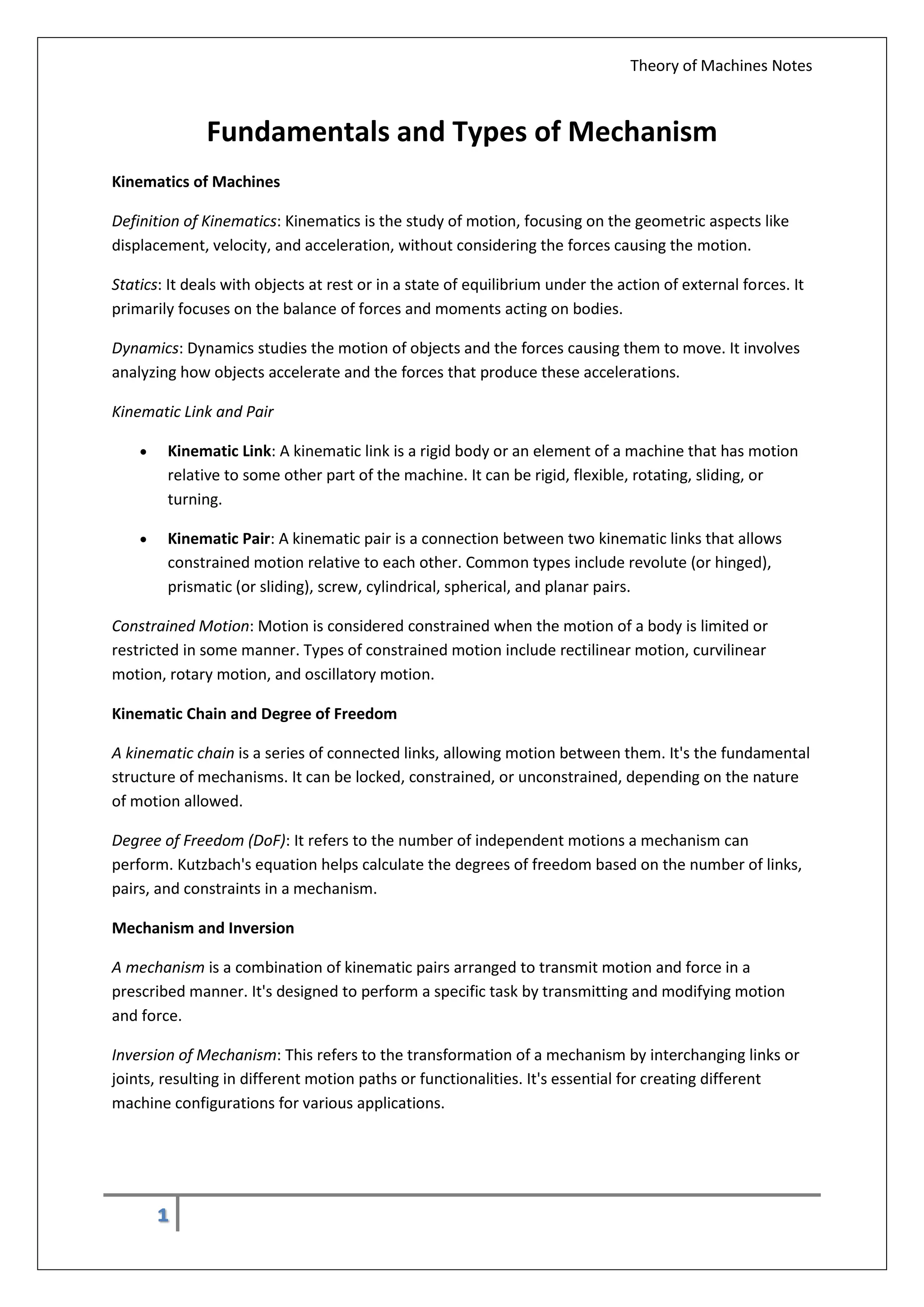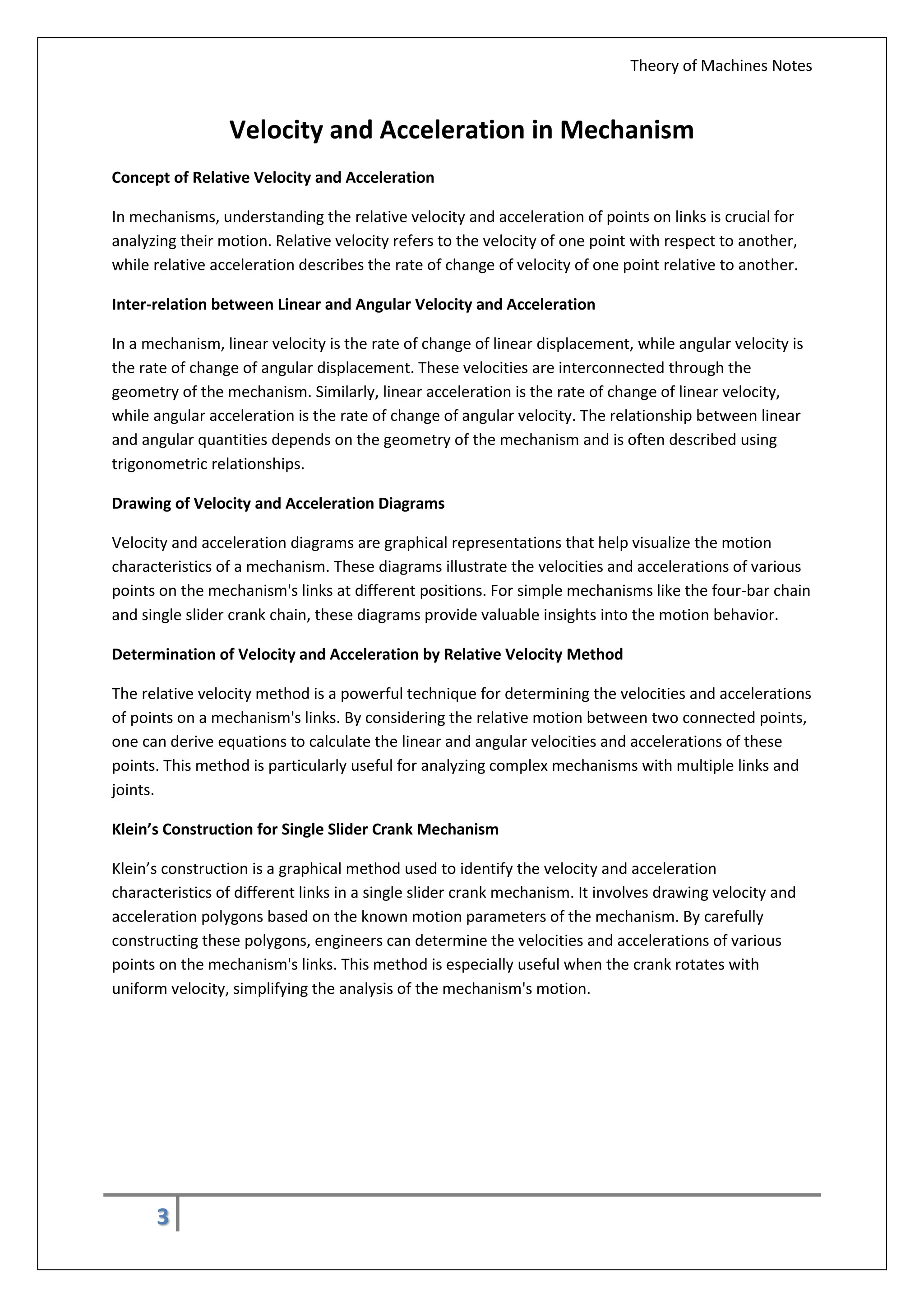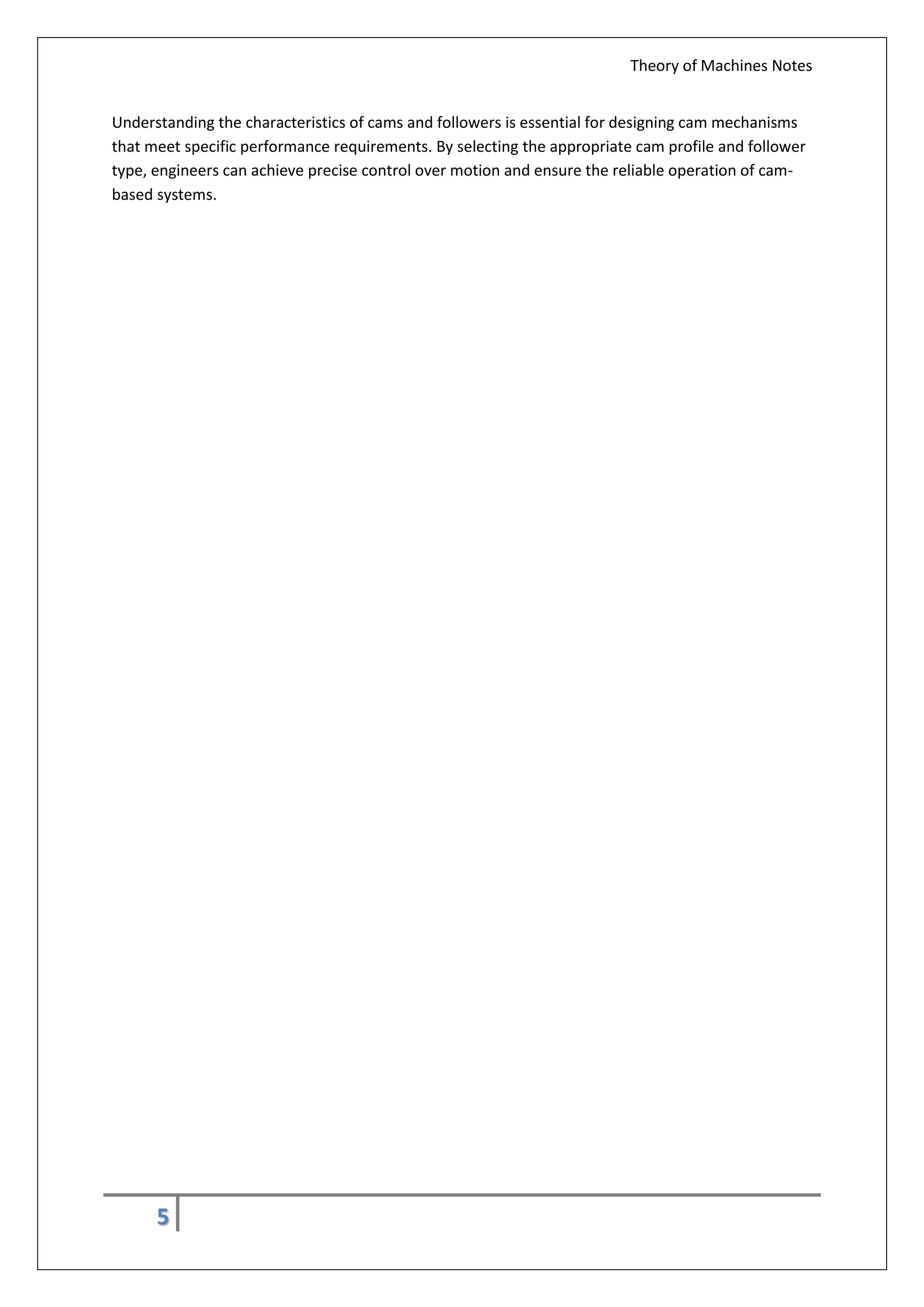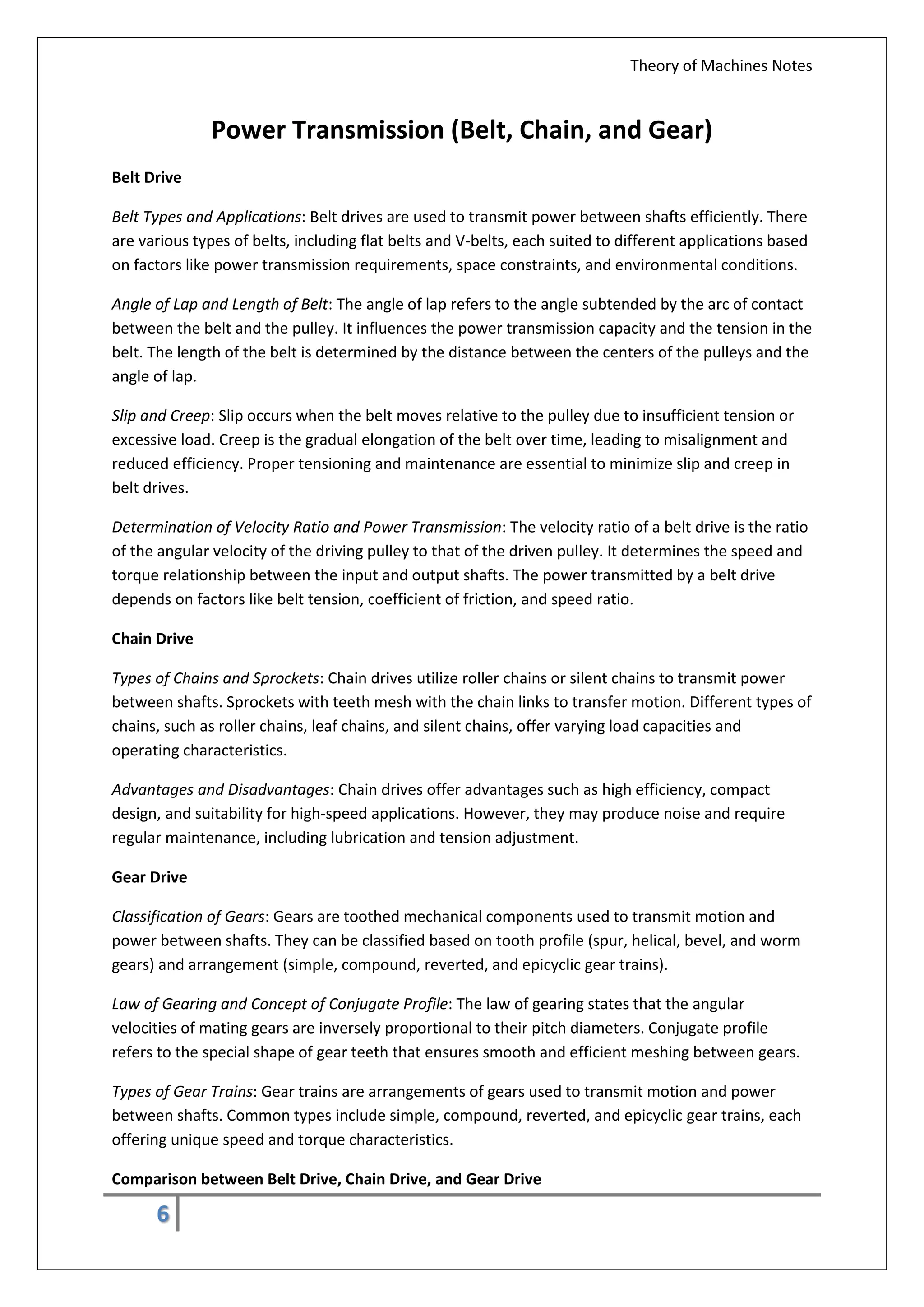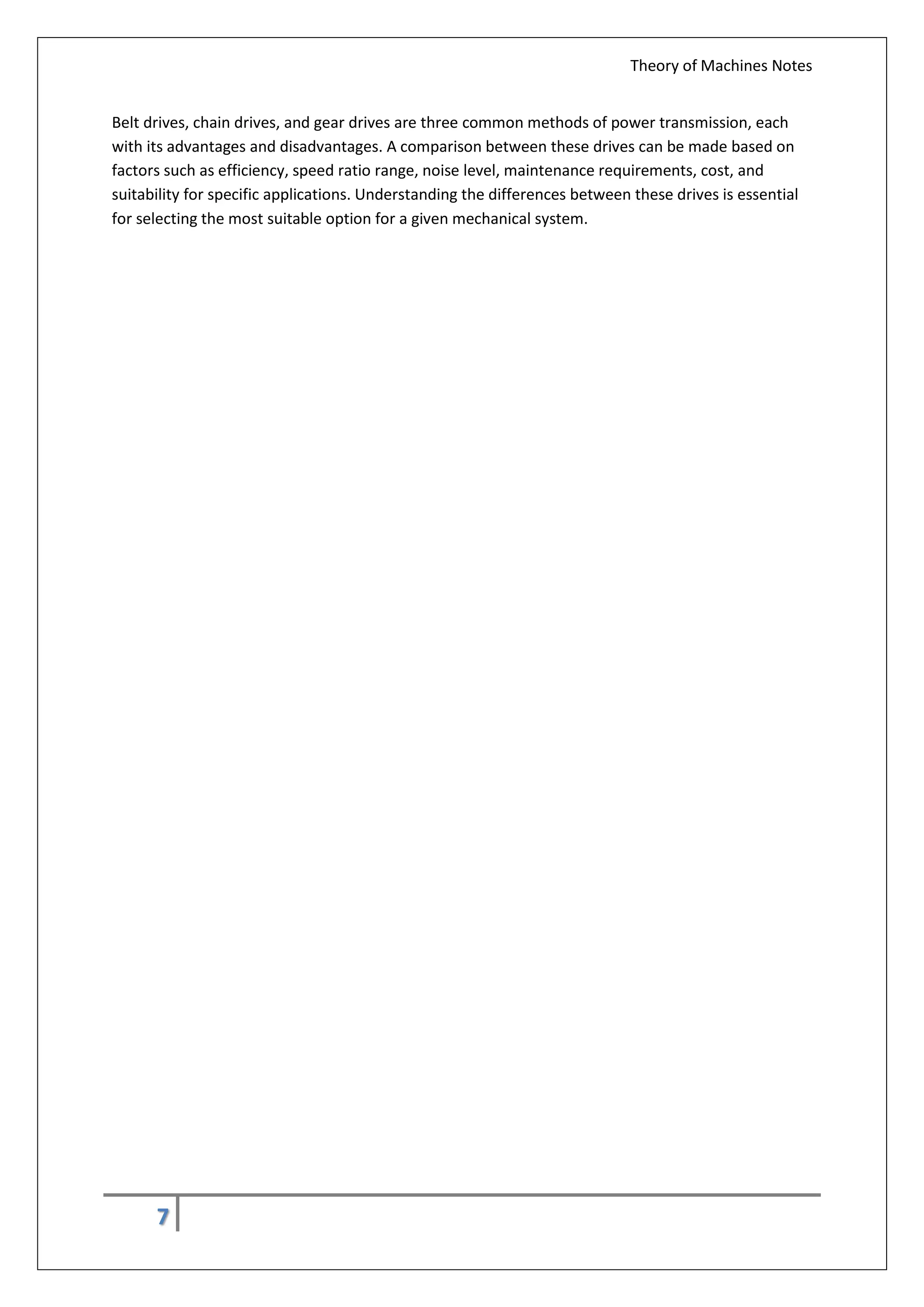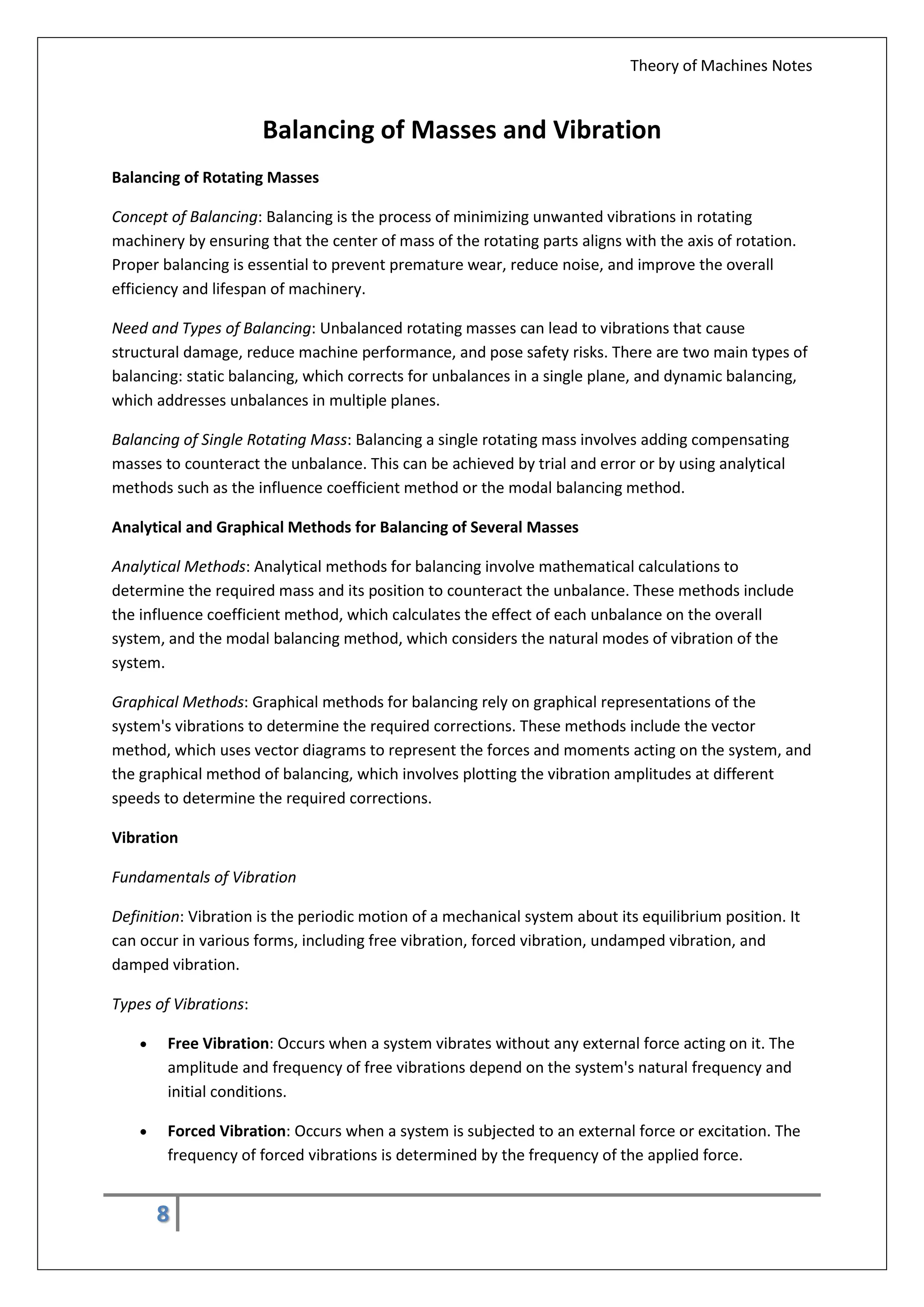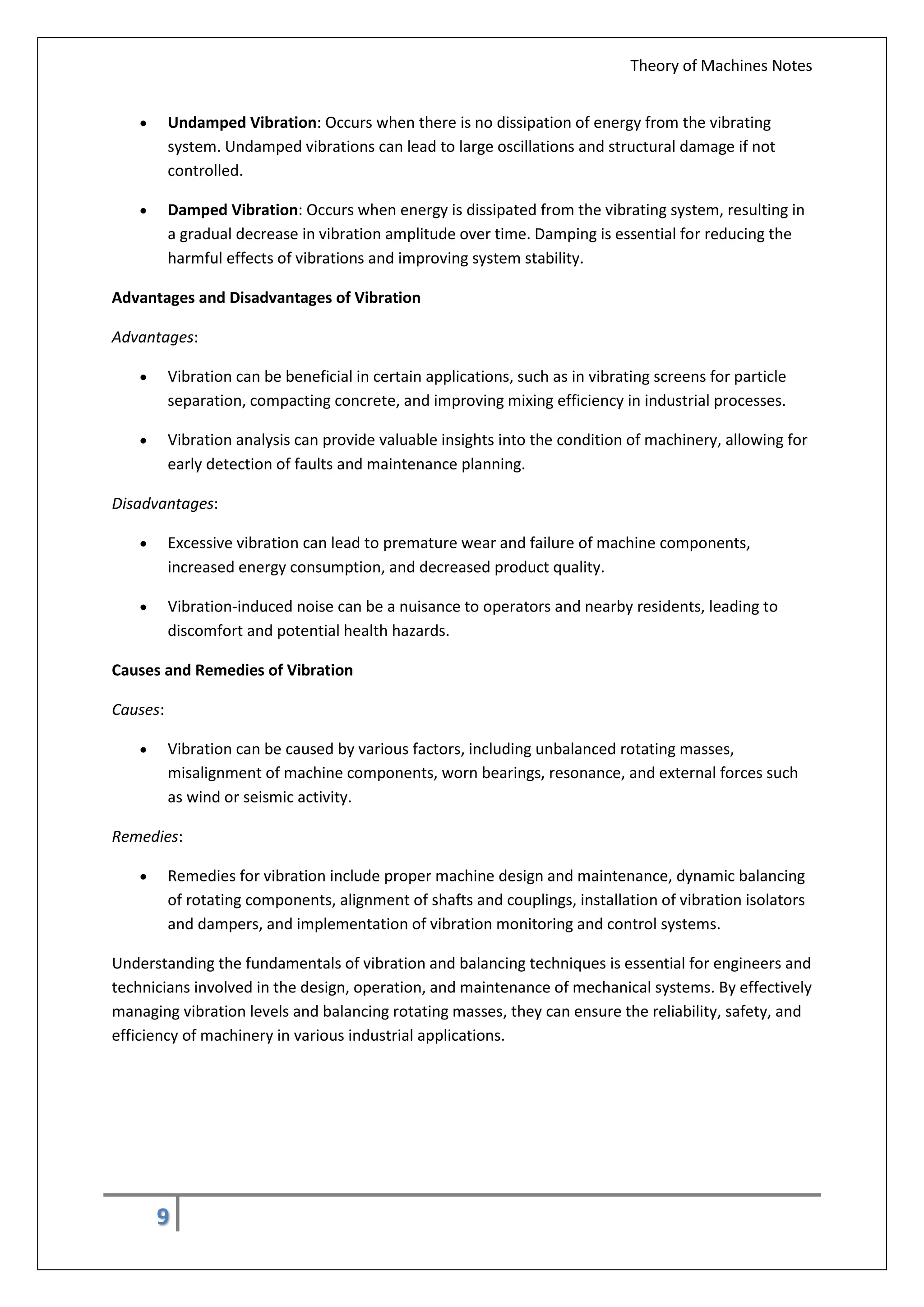The document covers the fundamentals of machine theory, detailing kinematics, dynamics, and the different types of mechanisms and their inversions, such as four-bar chains and cam mechanisms. It explains power transmission methods including belt, chain, and gear drives, along with the principles of balancing rotating masses and vibration analysis. Each section emphasizes the importance of selecting appropriate designs and understanding the characteristics of mechanical systems for efficient operation.
